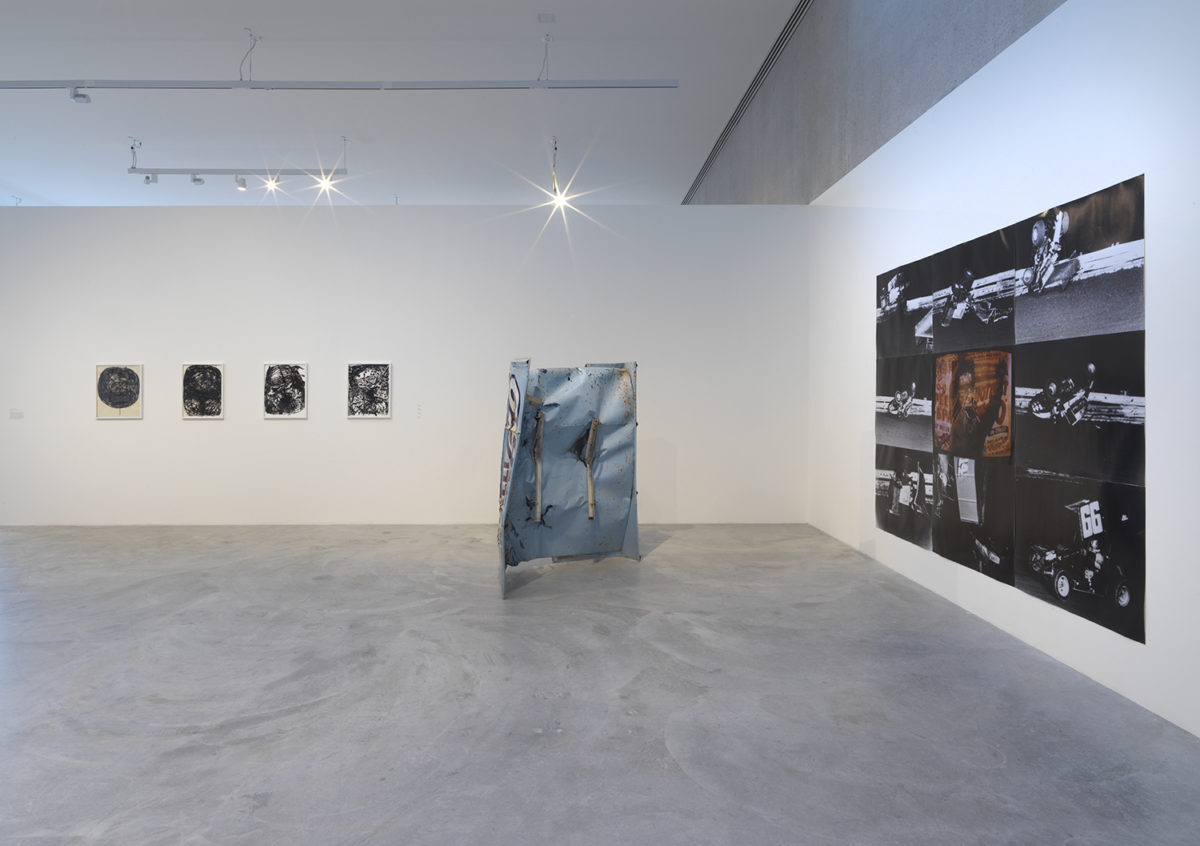One of the first things to do when art arrives for the next exhibition is to create a condition report. Actually, CAM Assistant Curator Misa Jeffereis tells me, she waits twenty-four hours after the work is on site to allow the art to “climatize.” Objects, like us, after a long journey need to settle before you can assess how the trip has been. How was the flight? How was the trip in the truck? How well were you accommodated? And how do you like being 466 feet-above sea level and the shifting barometric pressure and humidity of the Midwest after leaving Milan or Washington, D.C.?
Misa is present as the work is being taken from crates and unpacked by Registrar Jessi Cerutti and her crew. “The process involves a lot of photography,” Misa says, “paying special attention to marks, changes in the surface, changes in coloration. The report is just that–a piece of paper for drawing and listing the things you see. Even as the exhibition is on display we pay attention to the work. And then right after the show closes and before the re-packing we prepare an outgoing condition report.”
A lot of this is insurance related–document the condition of the work when it arrives and when it leaves. Be transparent. Be responsible. It’s how the art-loan business works.
With the recent Salvatore Scarpitta: Racing Cars exhibition, there were additional challenges. For example, Scarpitta’s Incident at Castelli: “It’s from a wreck,” Misa observes. “It is wrecked.”
Scarpitta worked toward a “total art.” In the later years of his practice it wasn’t enough to build facsimiles of race cars, he needed to build race cars and race them. And those cars crash, and the accumulated wreckage is documentation of Scarpitta’s art in action.
“Is that dent intentional?” Misa asks. The scars on the surface, the chipped paint, a sticker that is peeling off–Misa took hundreds of photos of Scarpitta’s work, and examined previous photos of the work to see what may have changed from ship to shore. Whether the cars are from a museum or private collection, Misa explains “they gather more wear. Objects are changing naturally.”
And these objects happen to be cars. “That pan you saw under Railduster, it caught a few drops of oil,” Misa reports, and documents.
